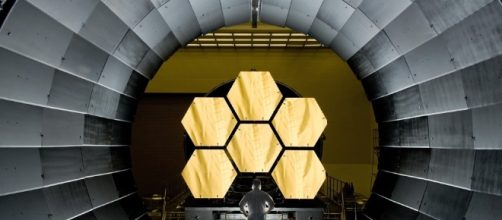James Webb Space Telescope (JWST), NASA’s new super-strong research tool, is scheduled to be launched in October next year. Astronomers and other scientists believe that, once launched, it will be a matter of time before it is able to find definite proof that Alien Life exists. First on the list of possibly inhabited planets, Proxima Centauri B, the giant "Warm Neptune" exoplanet or Saturn's moons Rhea and Titan, where what could be signs of life have already been discovered. Some of them are so optimistic they believe the historic result could be achieved in as soon as one year.
JWST capabilities
According to NASA, Webb will not be a replacement for Hubble, but a successor, because its capabilities are not the same. JWST will be looking at the Universe in infrared, whereas Hubble is doing that at optical and ultraviolet wavelengths, even though it has limited infrared capabilities. JWST also has a quite larger mirror than Hubble, able to collect much more light. This simply means that JWST can see much farther back into time than its predecessor can. Moreover, while Hubble has a quite close orbit around the Earth, JWST will be about 1.5 million kilometres away from our planet at the 2nd Lagrange point.
JWST main goal is to find alien life
NASA has announced that one of the main uses of the James Webb Space Telescope is to study the atmospheres of exoplanets, in order to find the building blocks of life in other solar systems in the universe.
JWST will be looking for dimming of the light from a star when a planet passes between the Earth and the star. Additionally, telescopes on Earth will help NASA’s scientists measure the mass of the exoplanets by calculating the stellar wobble produced by the gravity tug of an exoplanet. After that, JWST will conduct a spectroscopy of the exuplanet's atmosphere. Furthermore, JWST will also carry coronagraphs and it will be able to send direct information regarding exoplanets that are close to bright stars in order to determine factors like the exoplanet’s color, differences between winter and summer, vegetation, rotation and weather conditions. All elements that could potentially provide proof of alien life.
Alien life discovery closer than we think
Astronomers believe that after JWST is launched, it is just a matter of time before NASA finds definite proof of alien life. The Director of The Space Telescope Science Institute said that 10%-20% of the stars near our solar system have planets within the habitable zone. This means that it will not take long for a super-powerful telescope like JWST to study them and perhaps locate alien life.
In the Universe, there are almost an infinite number of stars with planets orbiting them. Based on mathematical probabilities, the possibility that life does not exist elsewhere is virtually zero. Such a significant discovery would surely determine NASA's future space missions.


